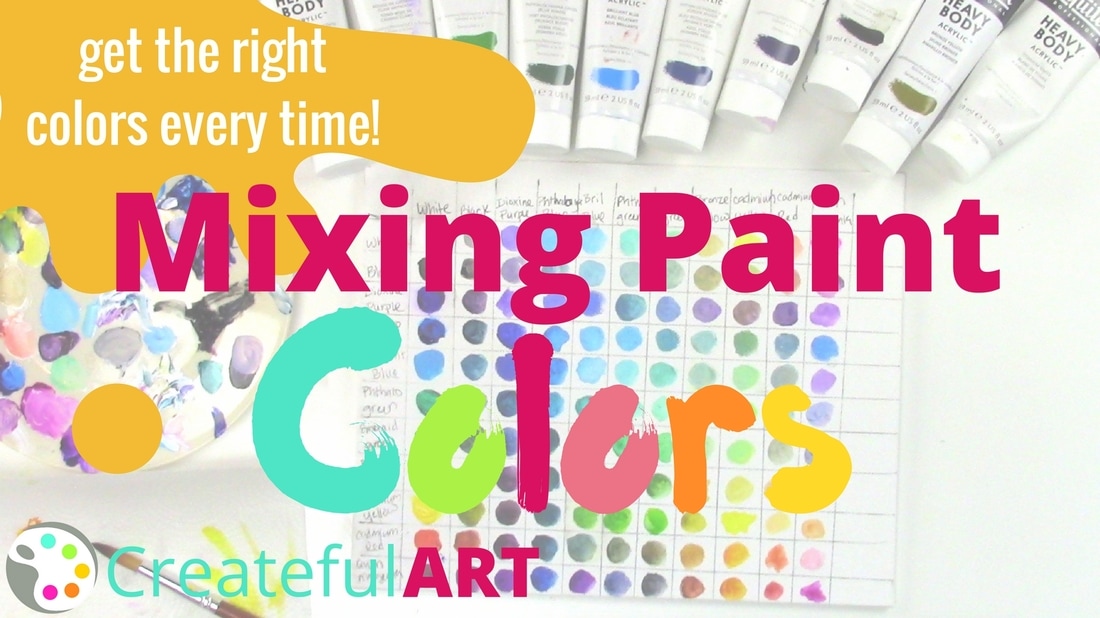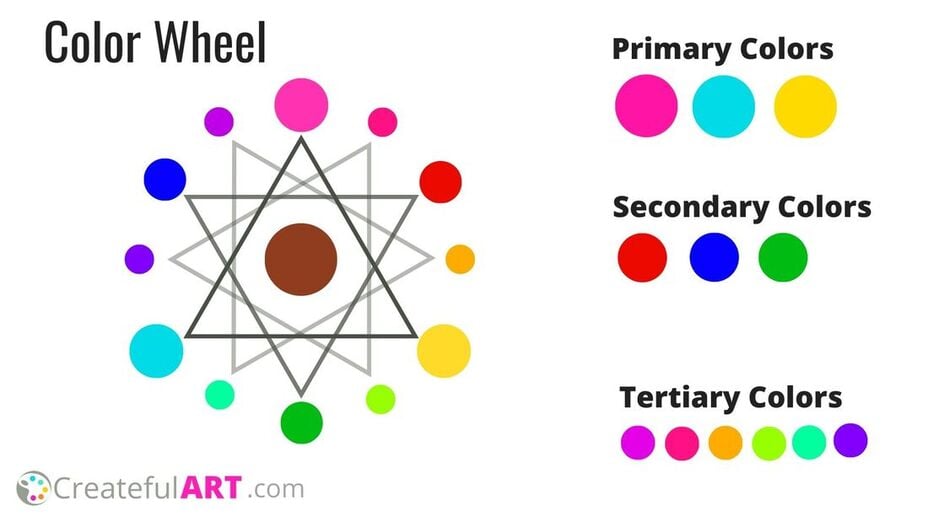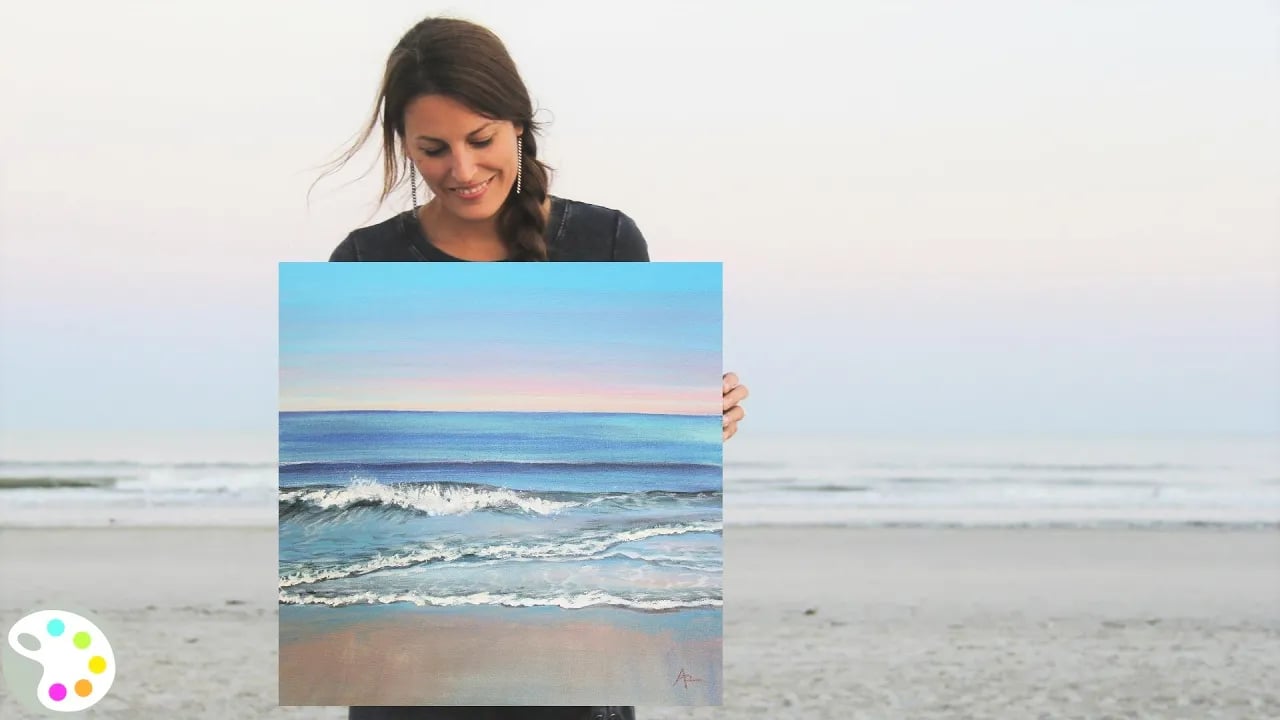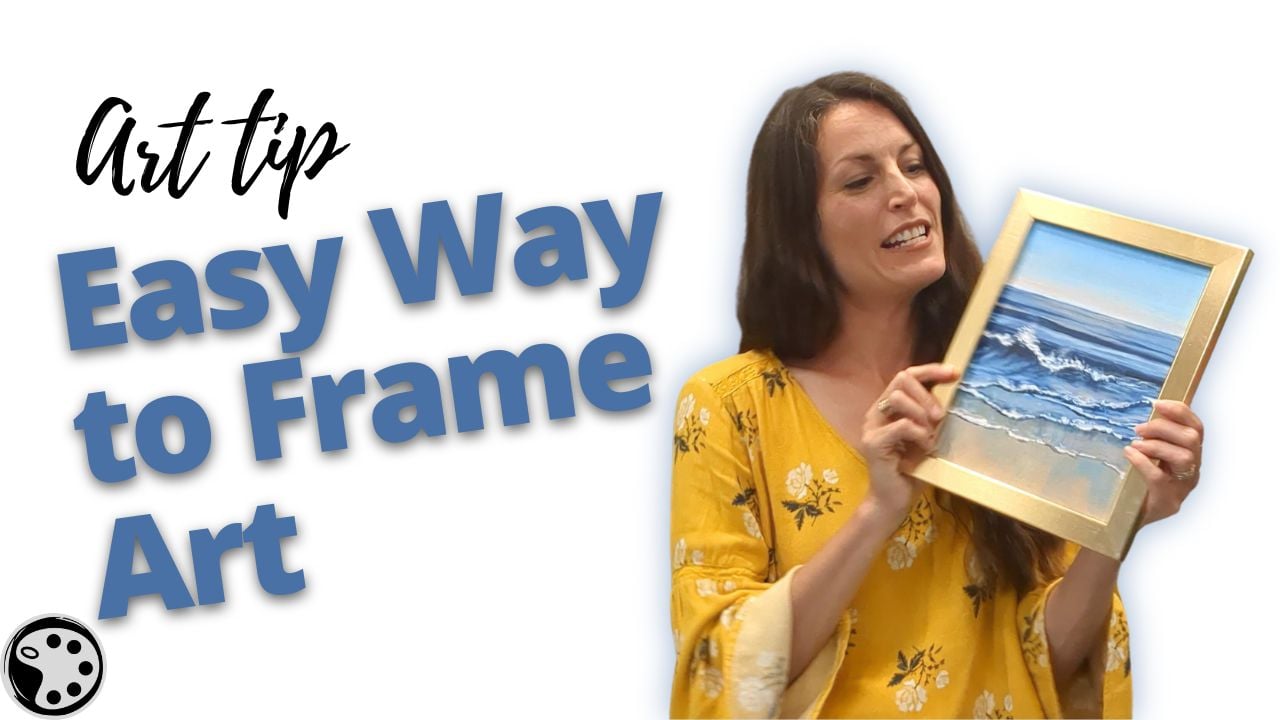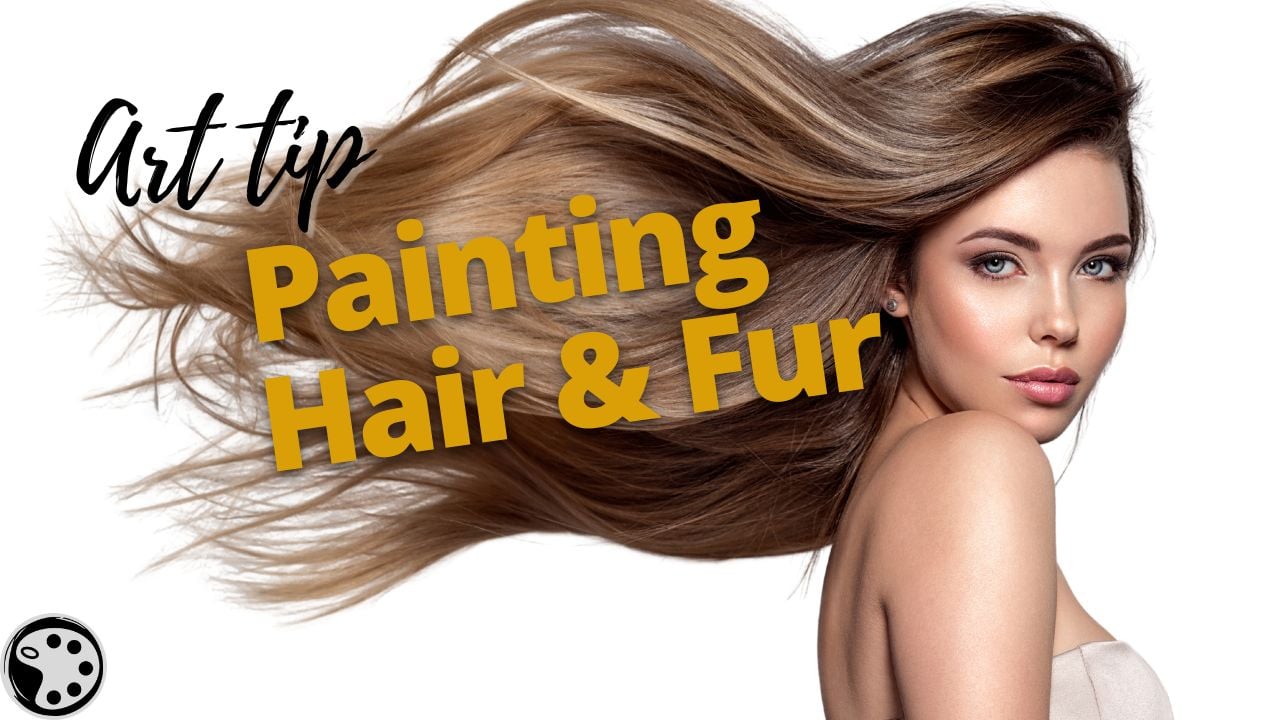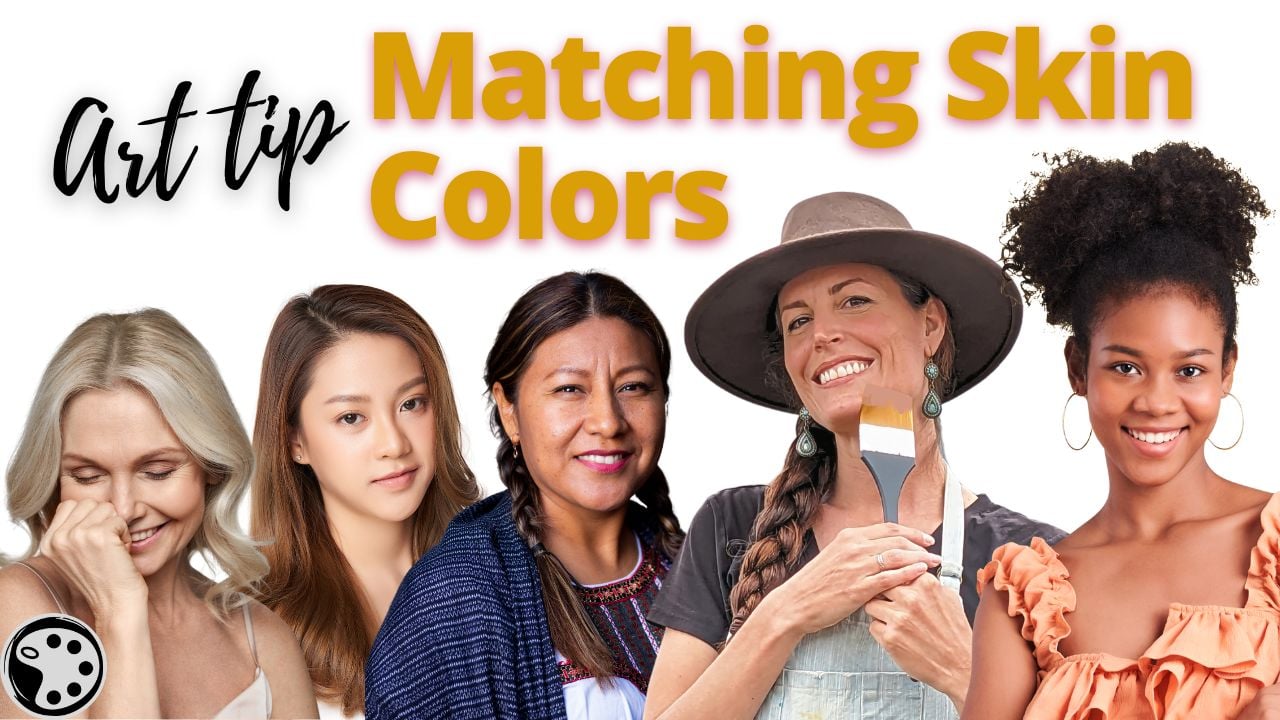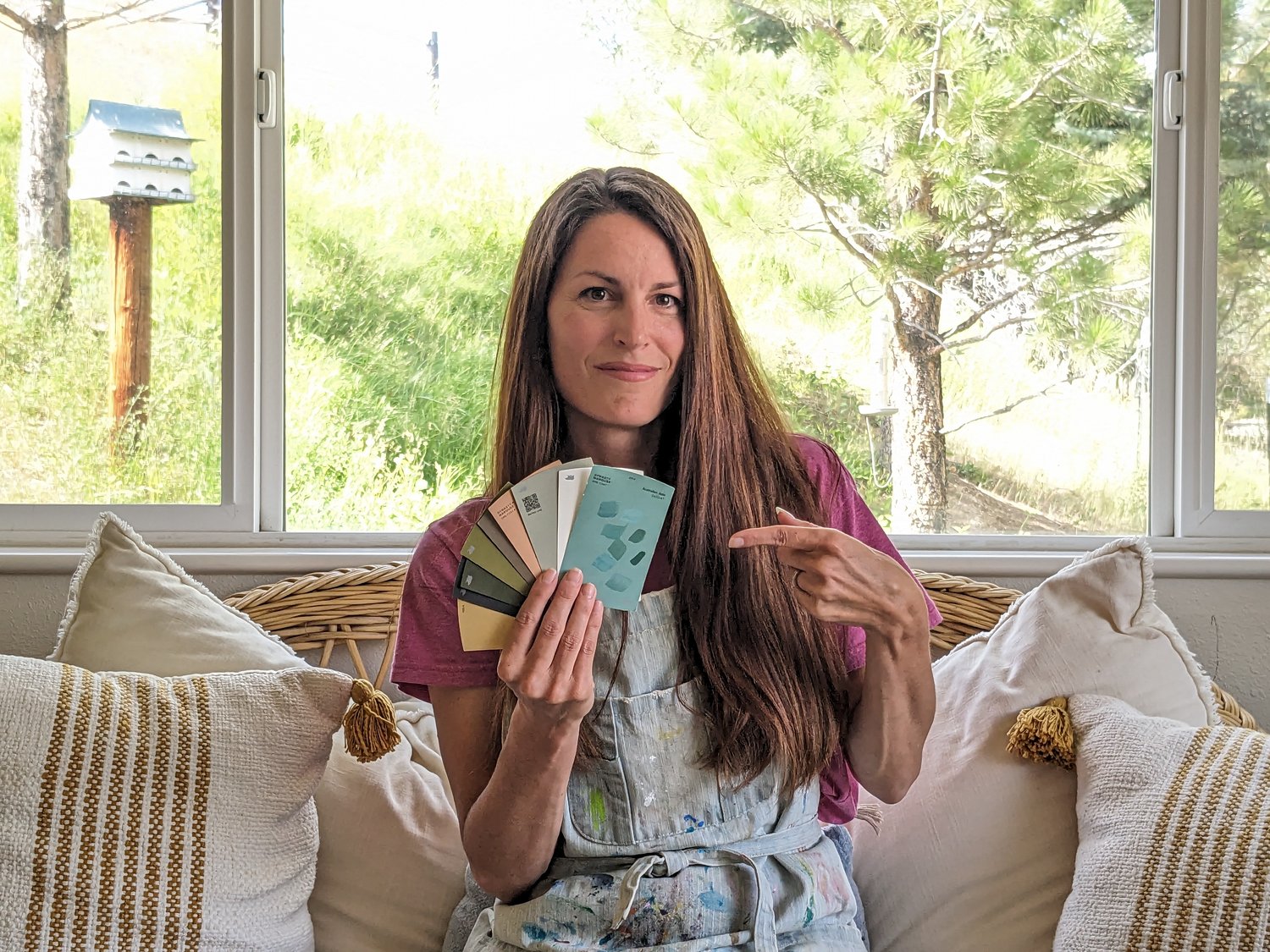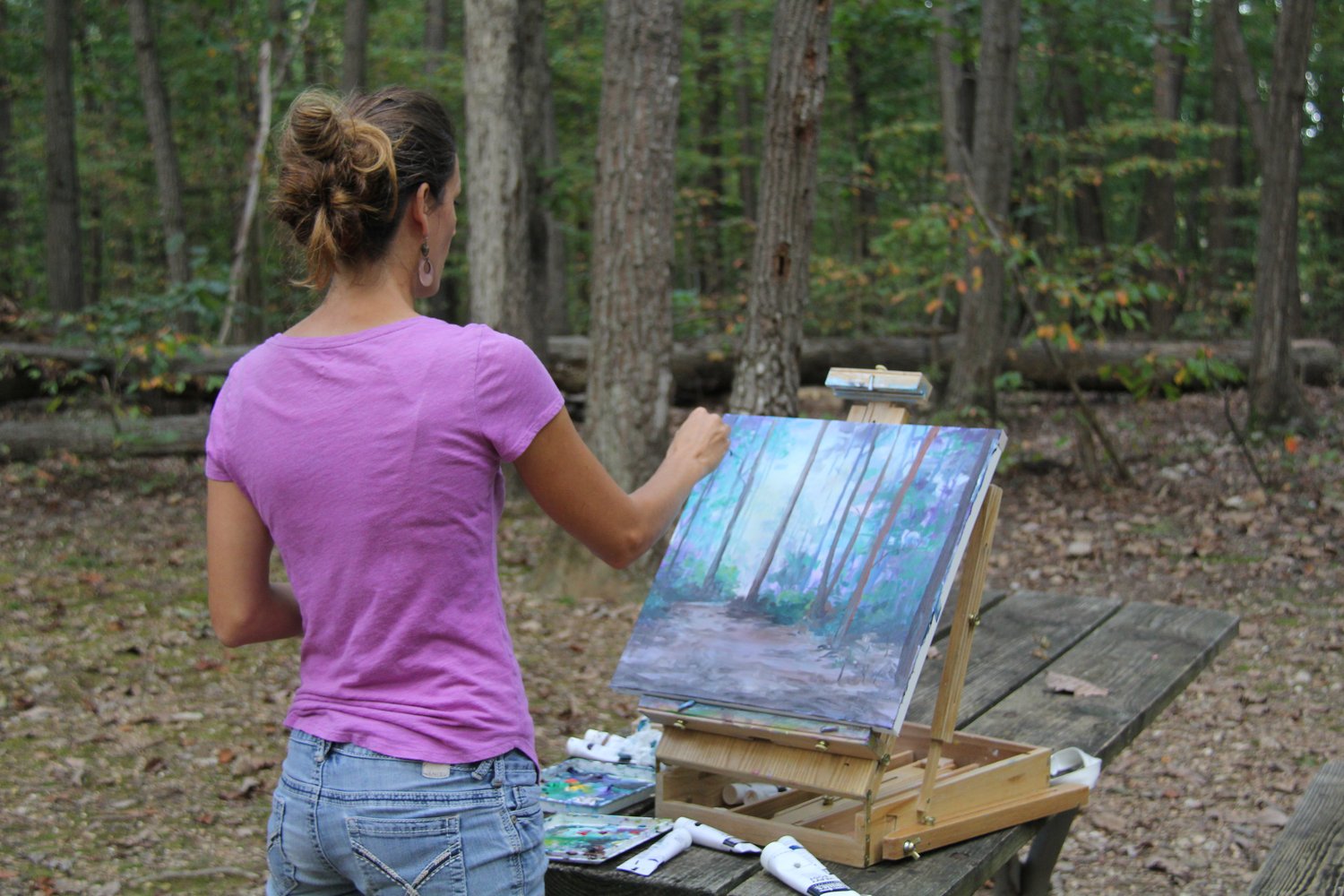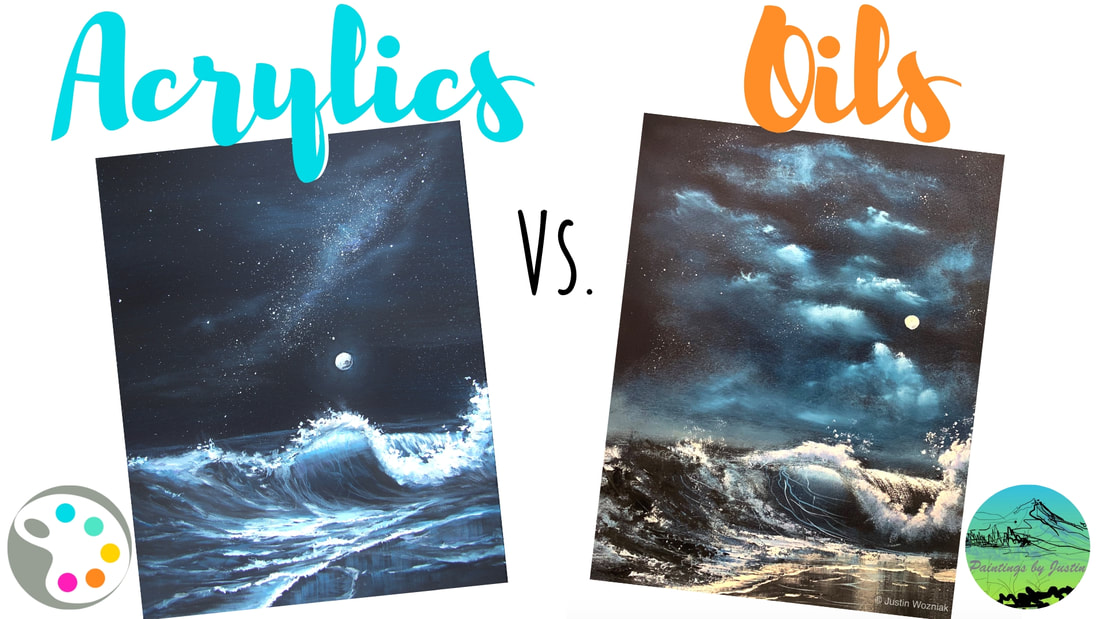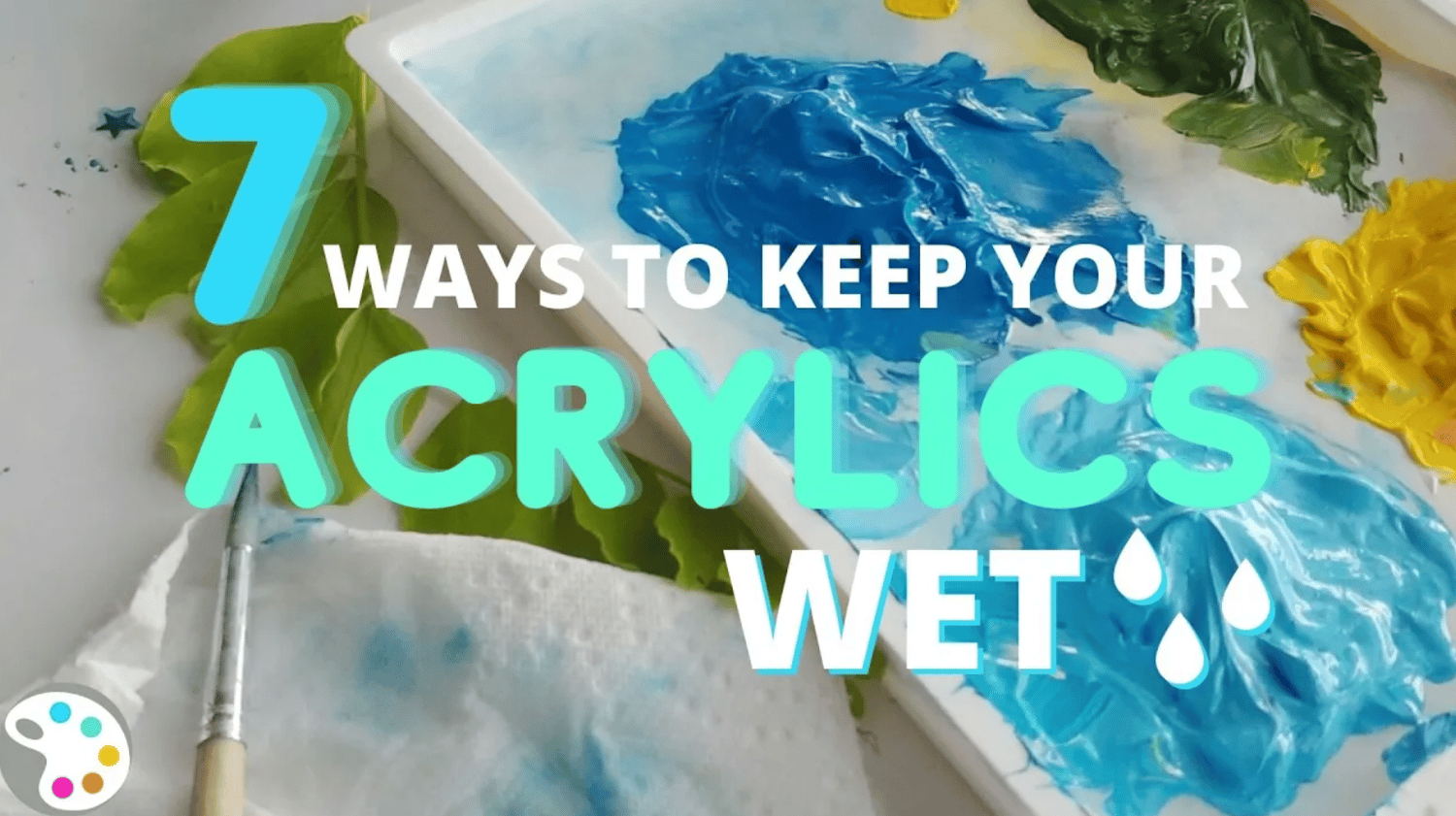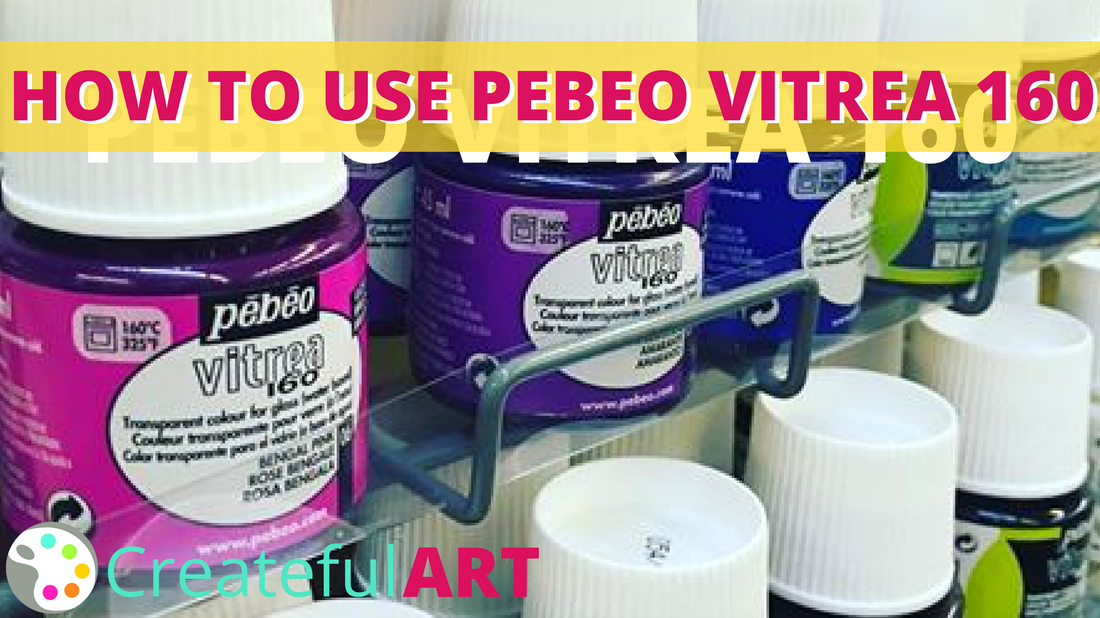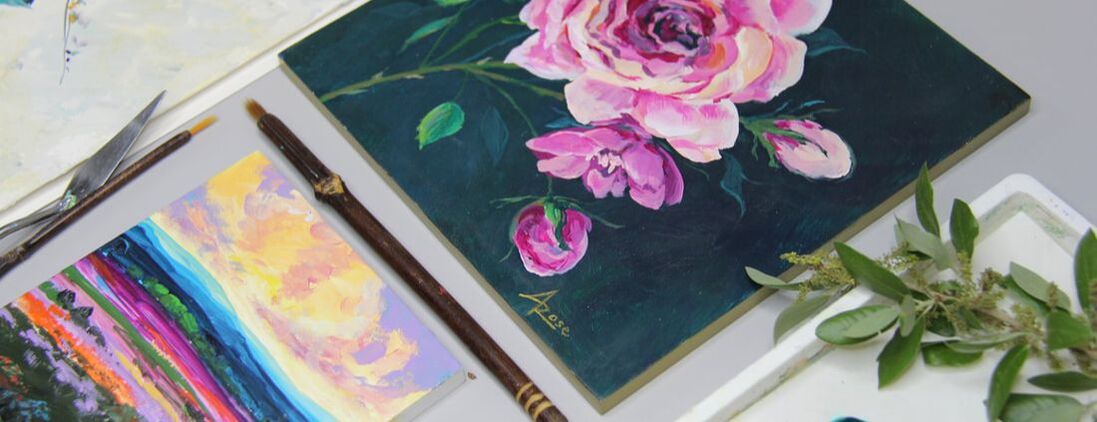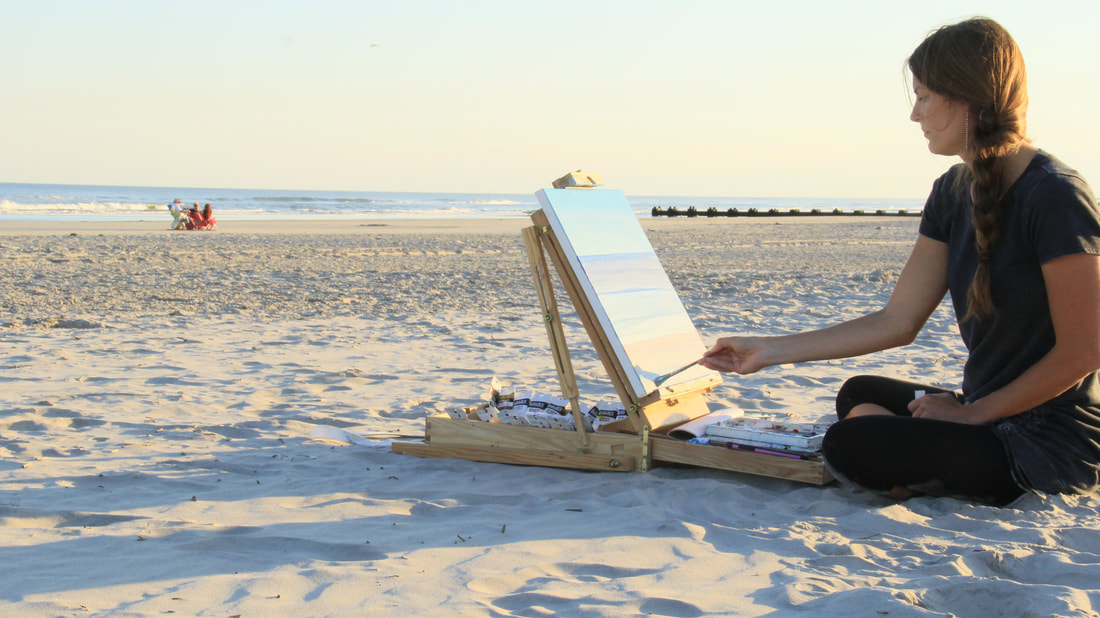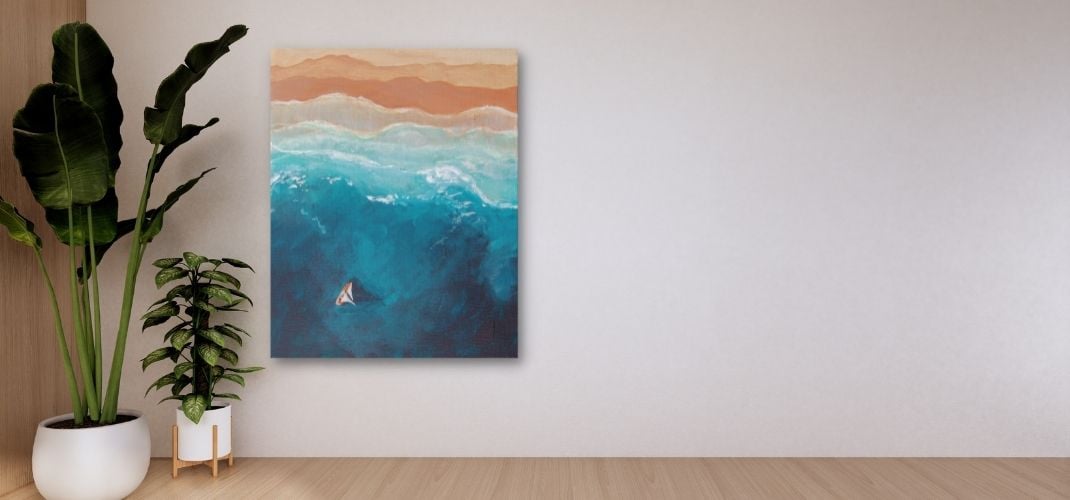When I first started to paint I got really frustrated when I couldn't mix and make the exact color I wanted. I wasted money and time either by having to buy the perfect colors or by mixing my paint to the point that it was ruined. So I came up with a system, a color chart that I have kept and used (A LOT), and a few added secrets to getting the right colors every time.
I would love to share my secrets with you so you can also get the colors you want every time you create art. Knowing how to mix colors is an essential skill to becoming a successful painter and artist. This lesson is perfect for beginner artists and is part of my online art course, so enjoy this free lesson! If you want to learn more art skills then sign up for more free art lessons here.
First of all, I am a visual learner which means I have to see what I need to do before I can do it. I know that most artists and art lovers out there are also visual learners and so I have made a fun video for you to watch that walks you through every step that I take to get the right colors. You can also read about each step below the video so that you can follow the steps there as well.
This is very important to understand before we begin, you can make your color charts using watercolor, acrylic, oil paints, and even pastels...whatever colored medium you use or want to try out. I make color charts for every color medium I have and because I am an art teacher (lol) that means I have a lot.
I use my color charts ALL THE TIME because you can't always tell what a color looks like by the outside wrapper or even the pigment. It really matters how that color will look on paper, canvas, or whatever you use and how it interacts with other colors. Watch the video below to get a general idea of what we will be doing. I more thorough lesson on making a color chart is added to the steps below.
WATCH THE VIDEO: MIXING PAINT COLORS
Share the love by giving this video a thumbs up, leaving a comment, and telling your friends how cool these free art lessons are!
What colors do you need to mix all colors?
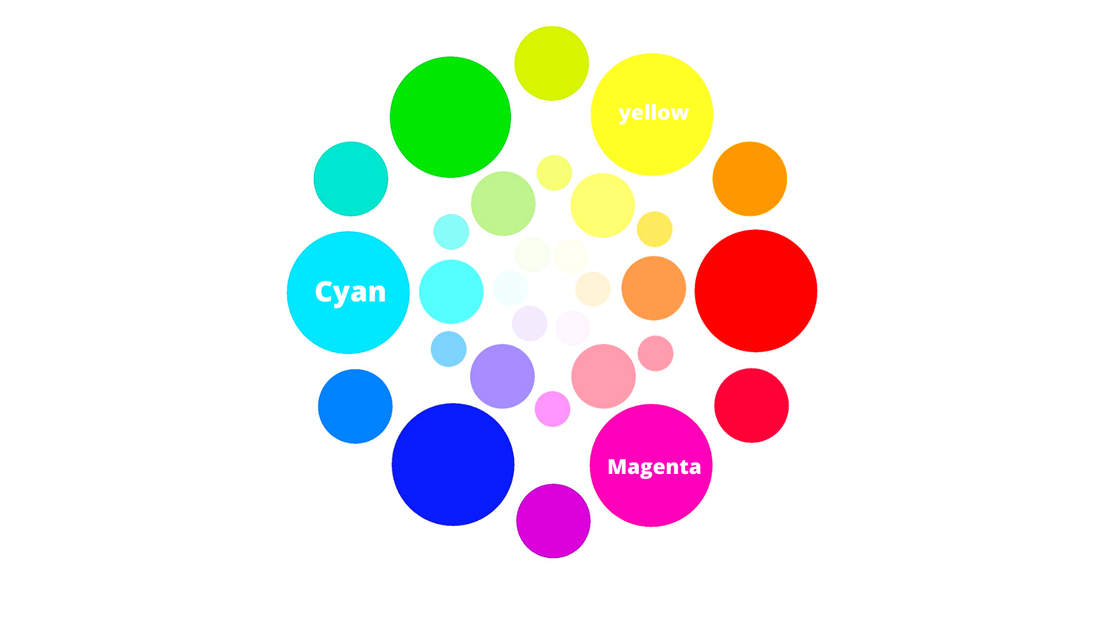
These are the most common questions asked about color mixing. How do I create the colors I want from the primary colors? What red, yellow, and blue do I start with when there are so many shades?
How do I create the colors I want from the primary colors? Erase what you know about the color wheel. The primary colors are not red, yellow, and blue. The real definition of a primary color is a color that can not be mixed by using other colors. This makes the real primaries for painting purposes Cyan, Magenta, and Yellow. These are the exact colors used in printers. They use these colors because when you have a white background, they make all the other colors.
Cyan + Magenta = Primary Blue
Cyan + Yellow- = Secondary Green
Magenta + Yellow = Primary Red
Cyan + Yellow + Magenta = black
1) The first thing you need is a Color Wheel. We all learn the color wheel at some point in childhood but it is easily forgotten when we don't use it. We may have also learned the color wheel a different way. Refresh your memory and use your color wheel as a reference until it is memorized. You are welcome to right-click and print this picture for your personal and/or classroom or other educational use.
2) Make a Color Chart. In the video below, I show you, step by step, how to make your own color chart but you can also follow the steps below. Use your color chart as a reference for learning the colors, seeing how colors mix, and finding the colors you want.
Have fun mixing colors!
Here are the steps to making your own color chart.
- Count the amount of colors you have + 1 for your color name. This is how many squares you need on your color chart.
- Use a ruler to mark points along the top and side of a canvas or paper. These points should be equal distances apart and include the number of sections you need for the color amounts you have.
- Make lines at those points making a grid with straight vertical and horizontal lines using a permanent waterproof pen (this is important because anything else can get ruined with water).
- Write the names of your paints in this order: white, black, Your darkest purple/blue, and then follow the color wheel to your last color, which should be your red/purple. I do it this way to keep the cool colors (blue, green, purple) together and the warm colors (red, orange, and yellow) together. It helps me find the colors easier.
- Place the colors on a plate or palette in the order you wrote them down. You will be doing a lot of mixing so leave room for it. I also use paper towels if I run out of room. You will also need water in a jar.
- Add your first row of colors on your chart under white going down. This is your pure paint (not mixed with anything). Make sure you clean your brush and dry it well between each color.
- Add your second row of colors on your chart also under white going across this time. This is your pure paint colors mixed with white. Half of your chart will be every mix of color mixed with white and will be added to the colors that meet going across. Your colors will meet twice, going down, and going across, so I use the 2nd time they meet to add white. This gives you two versions of every mix the dark and the light version.
- Now for your next row going down you mix black with every color on your chart and place that color on the grid in the squares where the two colors meet. Going down is the two colors mixed. Going across is the two color mixed + white.
- Now you just do this with every color combination on your grid. I like to mix the colors add it to my grid and then just mix white in and then add it to my grid so I don't have to find that certain mix again.
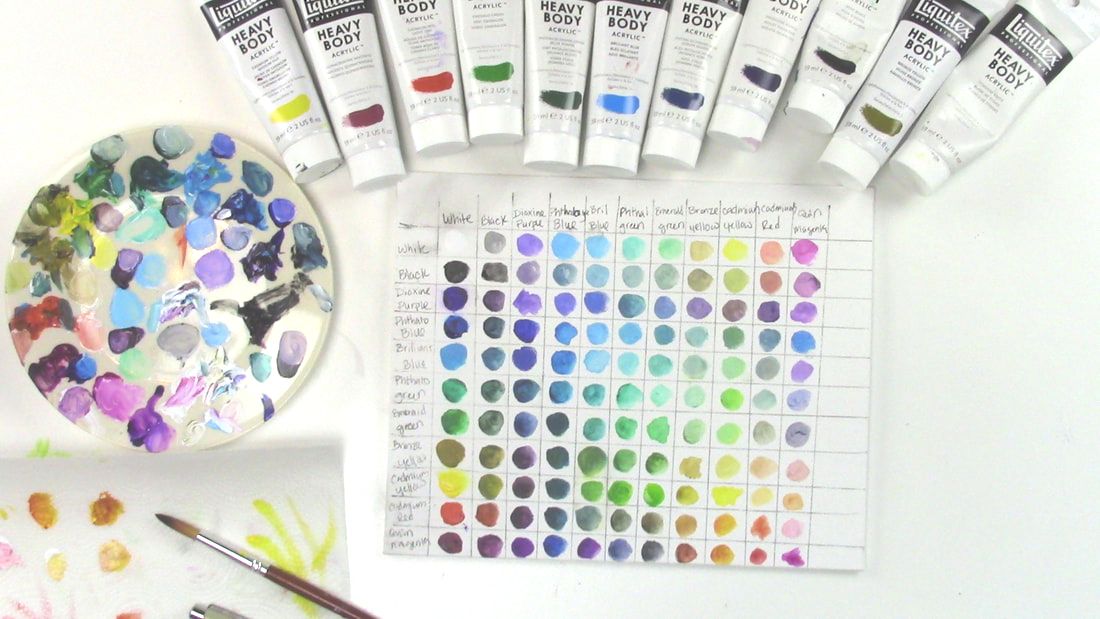
3) Using color references can help you get the correct colors you want. In the video below, I show you how to find the closest color on your color chart for your reference. If you can't find the right color on your chart no worries, I show you how to find the next closest color and mix it in until you have matched the color you need perfectly.
4) All you need are the Primary colors (magenta, yellow, and cyan) and black and white and you will discover you can make any color you want, even brown! So if you are new to painting make sure you have your primary colors. You can get a list of good primary paint colors and their names in my Acrylic e-book for beginners, which is a membership perk. Enjoy that e-book right here.
5) For Any colors that you find you are using a lot of, buy them as pure colors (no mixing needed) so you don't have to mix them all the time. That is why there are more colors than the primary to choose from. You don't need all the colors! Just get the ones you use the most. For example, I use a dark green (called sap green) a lot in my landscapes. I can mix this color but because I use it so much I buy it in a huge tube.
6) There is more to mixing colors. Each paint color has unique characteristics. As you paint with your colors you get to know them. I have more art lessons to help you understand color and what you need to know about color schemes. These lessons are essential for artists to master color and their paints. You can check out these lessons in my Acrylic Painting Guide for Beginners. Enjoy that e-book right here.
I hope you enjoyed this lesson! Don't forget to subscribe to enjoy more of them, right here!
Happy painting,
Ashley



